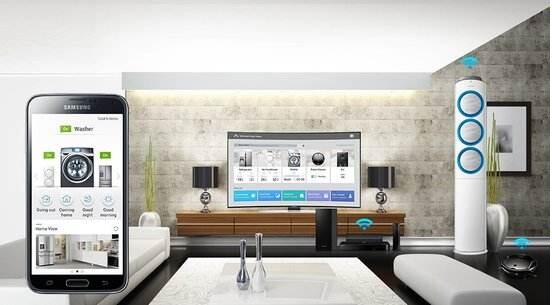What are the design principles of smart home systems?
The quality of smart home experience depends on the design of the entire smart home system. The most straightforward understanding is that the design of a smart home system determines whether the entire home can achieve intelligence. So what principles do smart home system design follow?

Security Xiaobian introduces the four characteristics of smart home system design. These four characteristics are the principles that must be followed in the design of smart home systems.
1. Practical convenience
The most basic goal of smart home is to provide people with a comfortable, safe, convenient and efficient living environment. For smart home products, the most important thing is to use the core of practicality, to abandon those flashy, can only be used as a display function, the product is based on practicality, ease of use and humanity. When designing a smart home system, the following most practical and basic home control functions should be integrated according to the user's demand for smart home functions: including smart home appliance control, intelligent lighting control, electric curtain control, burglar alarm, access control intercom, gas Leakage, etc., can also expand value-added functions such as three-table CC, video on demand. The control methods for many personalized smart homes are very diverse, such as: local control, remote control, centralized control, mobile phone remote control, sensor control, network control, timing control, etc., which is intended to free people from cumbersome tasks and improve Efficiency, if the operation process and program settings are too cumbersome, it is easy for users to generate rejection. Therefore, in the design of the smart home must fully consider the user experience, pay attention to the convenience and intuitiveness of the operation, it is best to use the graphical image control interface to make the operation WYSIWYG.
2, reliability
The intelligent subsystems of the entire building should be able to operate 24 hours a day, and the system's safety, reliability and fault tolerance must be highly valued. For each subsystem, take appropriate fault-tolerant measures in terms of power supply and system backup to ensure the normal and safe use of the system, good quality and performance, and the ability to cope with various complex environmental changes.
3. Standardity
The design of the smart home system solution should be carried out in accordance with relevant national and regional standards to ensure the scalability and scalability of the system. Standard TCP/IP protocol network technology is adopted in the system transmission to ensure that the systems between different manufacturers can be compatible and interconnected. . The system's front-end equipment is a versatile, open, and scalable device. For example, the system host, terminal and module adopt standardized interface design, which provides an integrated platform for external manufacturers of home intelligent systems, and its functions can be expanded. When it is necessary to add functions, it is not necessary to open the pipe network, which is simple, reliable and convenient. The systems and products selected for design enable the system to be interconnected with future evolving third-party controlled devices.
4, convenience
Whether the wiring installation is simple and directly related to cost, scalability, maintainability, must choose a simple wiring system, can be wired with the community broadband during construction, simple and easy; easy to learn, easy to operate and maintain .
When the smart home system is designed, as long as the above four characteristics can be achieved, the home system of the entire house can be intelligent and convenient when used.
A gabion is a cage, cylinder, or box filled with rocks, concrete, or sometimes sand and soil for use in civil engineering, road building, military applications and landscaping.
Gabion baskets are wire containers made of hexagonal netting. The wire is double twisted and the mesh is reinforced by a wire border along the edges. The baskets are filled with stones and linked together to form a monolithic structure.
Gabion box, also known as a gabion basket, is a WIRE MESH container filled with stones or other hard materials. They are used in civil engineering projects to control erosion, stabilize soil, and create retaining walls.
Gabion mesh is the wire material used to make gabion boxes and baskets. It is typically made of heavy galvanized steel or coated with PVC to resist corrosion. The mesh is woven into a hexagonal pattern to provide strength and flexibility.
Gabion mesh is a type of wire mesh that is used to build structures like retaining walls, erosion control barriers, and other similar structures. It is typically made of steel wire that is woven into a mesh pattern, and then filled with rocks or other materials to create a strong, durable structure. The mesh is designed to be strong enough to hold the weight of the materials inside, while also being flexible enough to conform to different shapes and sizes. Gabion mesh is often used in civil engineering projects, landscaping, and other construction projects.
Gabion,Gabion Baskets,Gabion Box,Gabion Mesh
Hebei Aibuer trading co., Ltd , https://www.ablewiremesh.com